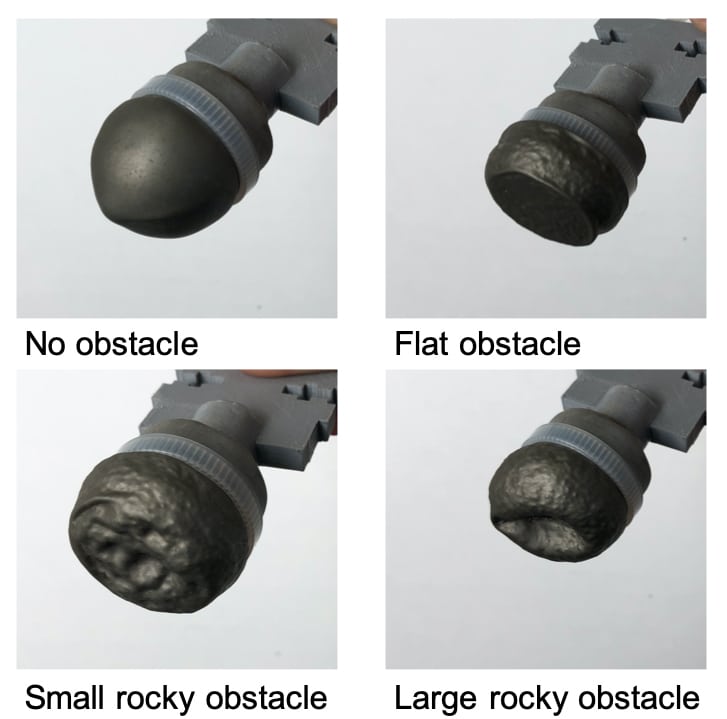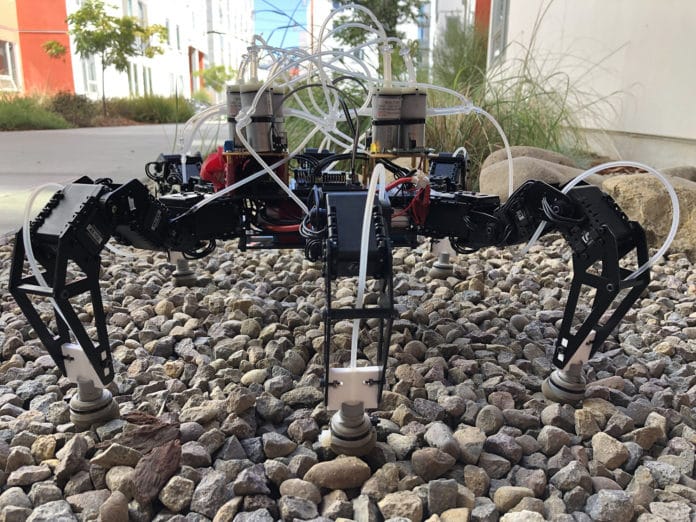Robots need to walk fast and efficiently on natural, uneven terrain so they can go everywhere humans can go. One of the main uses of robots with legs is exploring hazardous disaster sites. Often, neither wheeled nor even caterpillar type robots are able to move around complex blockages.
Now scientists figured out how to increase the speed of movement of walking robots in a complex landscape. A key component of the new development was coffee. Researchers at the University of California San Diego have developed a pair of robotic feet that they say can make a robot up to 40% faster when it reaches uneven surfaces.
The feet are made of latex membrane filled with coffee grounds, which means that the feet can be adjusted automatically depending on the surface on which they are pressed. This is something that scientists call “granular jamming” that allows granular media, in this case, the coffee grounds, to go back and forth between behaving like a solid and behaving like a liquid.

Credits: UC San Diego
When the foot is in the air, the granules of the coffee grounds inside the shell remain soft and loose. But when the feet hit the ground, they firm up, conforming to the ground underneath and providing solid footing. This flexible coffee-filled feet then unjam and loosen up when transitioning between steps. The support structures help the flexible feet remain stiff while jammed.
The feet of the machine can act passively and actively. They found that passive jamming feet perform best on flat ground, but active jamming feet do better on loose rocks. The feet also helped the robot’s legs grip the ground better, increasing its speed.
Laboratory tests have shown that with these legs, the hexapod robot moves 40% faster on wood chips or pebbles. This is partly due to the fact that coffee feet reduce by 62% the depth of penetration in the sand on impact. At the same time, the foot reduced by 98%, the force required to pull the foot out when compared to a fully rigid foot.
The researchers are now planning to work on “granular jamming”, among other things, by integrating different sensors in the robot coffee feet. These could determine what type of material the robot is walking on and decide whether the feet should work actively or passively while the robot is moving.
